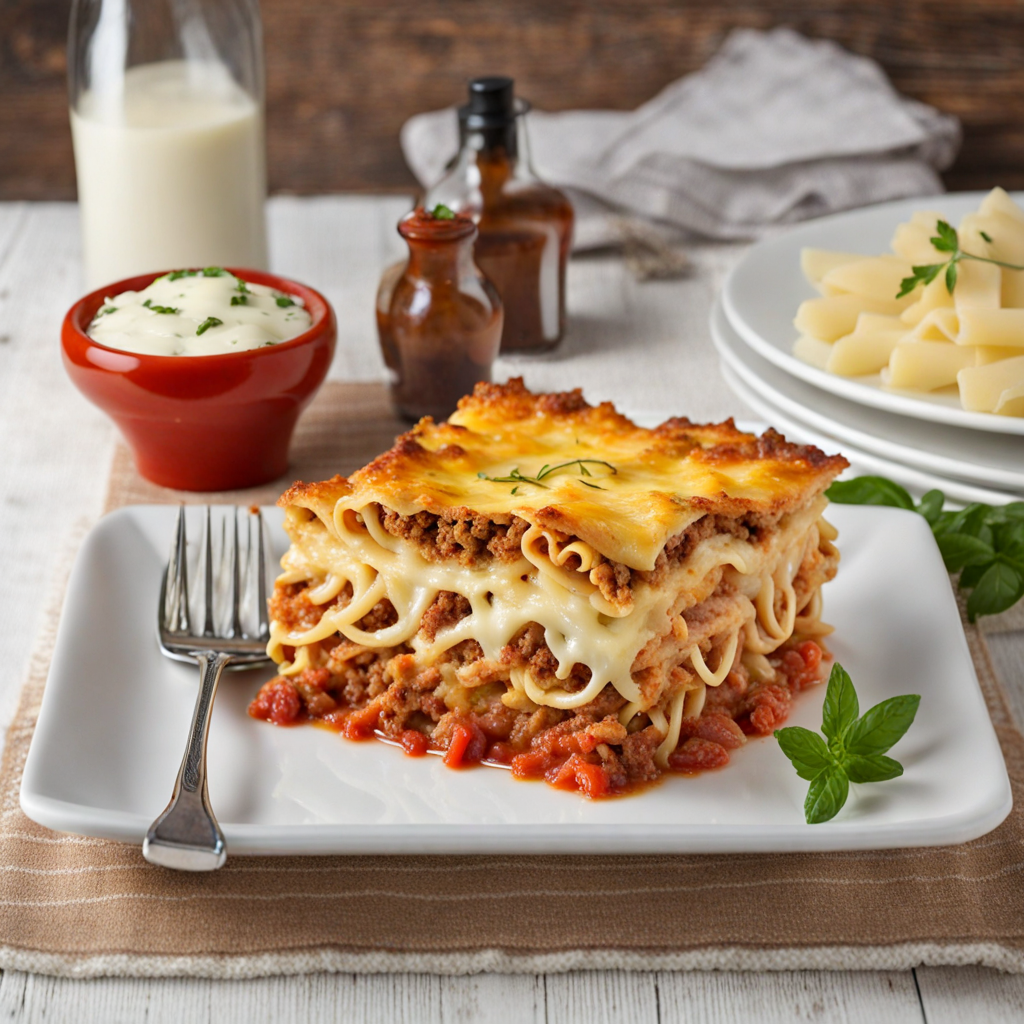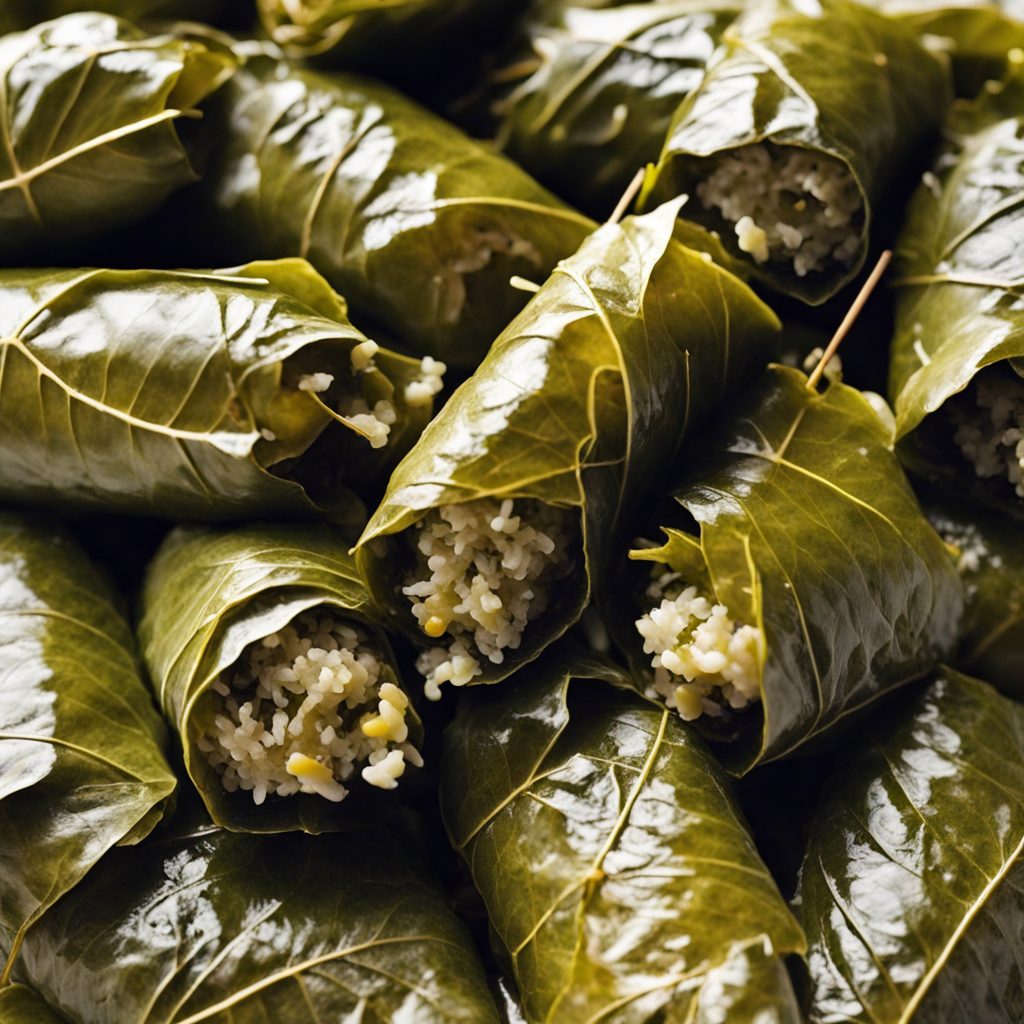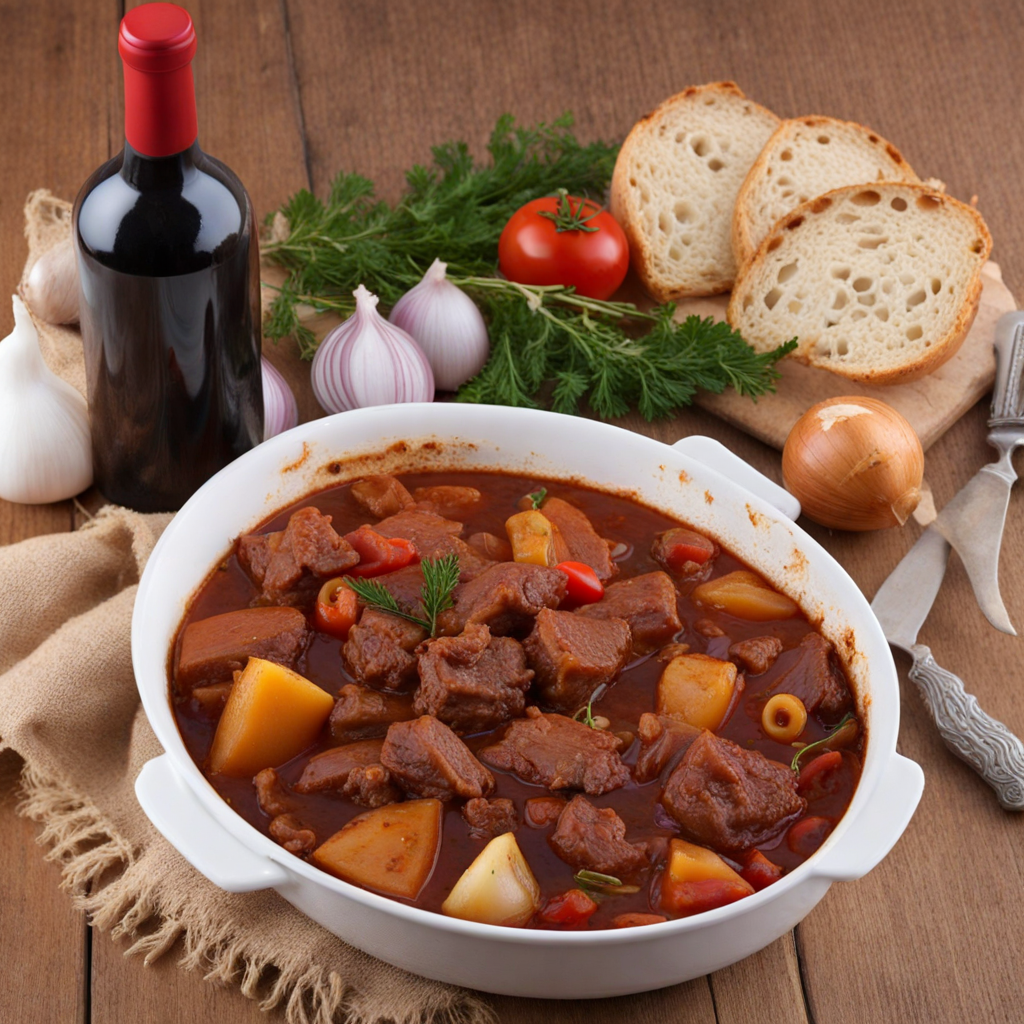Pastitsio
Pastitsio is a beloved Greek comfort food that beautifully marries flavors and textures, making it a must-try for anyone eager to explore new culinary experiences. At its core, pastitsio is a layered pasta dish, often likened to a Greek version of lasagna. It typically features thick, tubular pasta, such as bucatini or penne, which is enveloped in a rich meat sauce made from ground beef or lamb, infused with aromatic spices like cinnamon and nutmeg. This combination creates a warm and inviting flavor profile, with the spices adding a unique twist that transports the palate straight to the heart of Greece. One of the defining characteristics of pastitsio is its luxurious béchamel sauce, a creamy white sauce made from butter, flour, and milk, often enriched with eggs and cheese. This velvety topping is spread generously over the meat and pasta layers, forming a golden crust when baked. The béchamel not only provides a delightful creaminess that complements the hearty meat sauce but also adds a touch of elegance to the dish, making it suitable for both casual family dinners and festive gatherings. Served piping hot, pastitsio is the epitome of comfort food, delivering a satisfying combination of flavors in every bite. Each layer reveals a harmonious blend of savory meat, tender pasta, and creamy béchamel, creating a dish that is both filling and indulgent. Whether enjoyed at a traditional taverna or prepared at home, pastitsio invites you to savor the essence of Greek cuisine, leaving a lasting impression on your taste buds and a sense of warmth in your heart.
How It Became This Dish
The Culinary Journey of Παστίτσιο: A Greek Classic Origins and Influences Pasticcio, or Παστίτσιο in Greek, is a beloved dish that embodies the rich tapestry of Greek culinary history. Its roots can be traced back to the Byzantine Empire, where it was known as "pastitsion." The dish is thought to have been influenced by the Roman "pastitium," which was a layered dish of pasta, meat, and sauce. This early adaptation reflects the intermingling of cultures and cuisines that characterized the Mediterranean region. During the Byzantine era, pastitsion was predominantly made with pasta, meat, and spices, showcasing the flavors of the time. The Byzantines had a penchant for layering ingredients, a technique that would become a hallmark of pastitsio. As the Byzantine Empire fell and the Ottoman Empire rose, the culinary landscape of Greece transformed, incorporating new ingredients and methods. The Ottomans brought their own versions of layered dishes, notably "manti" and "börek," which influenced the development of Greek cuisine. Cultural Significance Pastitsio is more than just a dish; it is a symbol of Greek hospitality and tradition. It is often served during family gatherings, celebrations, and special occasions, reflecting the importance of communal dining in Greek culture. The dish is particularly popular during holidays such as Easter and Christmas, where it represents the warmth of home-cooked meals shared among loved ones. The preparation of pastitsio is often a communal effort, with family members coming together to cook and share stories. This reinforces the cultural significance of food as a medium for connection and celebration. In many Greek households, pastitsio is a recipe passed down through generations, each adding a personal touch that reflects their family's history and regional influences. The Evolution of Pastitsio As Greece entered the 19th and 20th centuries, pastitsio began to evolve further. The introduction of new ingredients, such as béchamel sauce, became a defining feature of the dish. The French culinary influence during the 19th century led to the incorporation of this creamy sauce, which added a rich, velvety layer to the baked pasta dish. The béchamel, often flavored with nutmeg and pepper, became a beloved component of pastitsio, distinguishing it from its earlier iterations. Regional variations of pastitsio emerged, reflecting local tastes and available ingredients. In some areas, such as Crete, the dish might include different types of pasta or be prepared with a spicier meat sauce, while in coastal regions, the addition of seafood could be found. Each variation tells a story of the region's culture and culinary heritage, demonstrating how pastitsio adapts to its environment while remaining true to its roots. Modern-Day Pastitsio In contemporary Greece, pastitsio continues to be a staple of both home cooking and restaurant menus. Its enduring popularity is a testament to its comforting flavors and versatility. The dish is often served at tavernas and is a favored choice in many homes, where it can be made in large quantities, allowing for leftovers that taste even better the next day. The rise of culinary tourism in Greece has also contributed to pastitsio's fame beyond its borders. Tourists seeking an authentic Greek experience are often drawn to this dish, eager to savor its rich flavors and satisfying textures. As a result, pastitsio has found its way onto menus in Greek restaurants around the world, fostering a greater appreciation for Greek cuisine. In recent years, chefs have begun to experiment with traditional recipes, introducing variations that incorporate modern ingredients and techniques. Some have opted for whole grain or gluten-free pasta, while others have explored vegetarian or vegan versions, replacing meat with lentils or mushrooms. These adaptations reflect a growing trend towards health-conscious eating while honoring the essence of pastitsio. Pastitsio and Identity Pastitsio is emblematic of Greek identity, serving as a reminder of the country's long history and diverse cultural influences. The dish represents the blending of flavors from various eras, showcasing how culinary traditions evolve while retaining their core essence. For many Greeks, pastitsio is a comfort food that evokes memories of family gatherings and shared meals, reinforcing its status as a cultural touchstone. Moreover, pastitsio serves as a canvas for storytelling. Each layer of pasta, meat, and sauce tells a tale of the land, the people, and the history that has shaped Greek cuisine. Today, as global cuisine continues to intertwine, pastitsio remains a steadfast reminder of the importance of preserving culinary heritage while embracing innovation. Conclusion In conclusion, pastitsio is a dish that encapsulates the rich history and cultural significance of Greek cuisine. From its Byzantine origins to its contemporary presence on global menus, pastitsio has evolved while remaining a cherished symbol of Greek identity. As it continues to adapt to modern tastes and dietary preferences, pastitsio stands as a testament to the enduring power of food to connect people, celebrate traditions, and tell stories that span generations. As you savor a plate of pastitsio, you partake in a culinary journey that connects you to the past, present, and future of Greece—a journey that celebrates the joys of shared meals, family, and the vibrant culture that is uniquely Greek.
You may like
Discover local flavors from Greece







